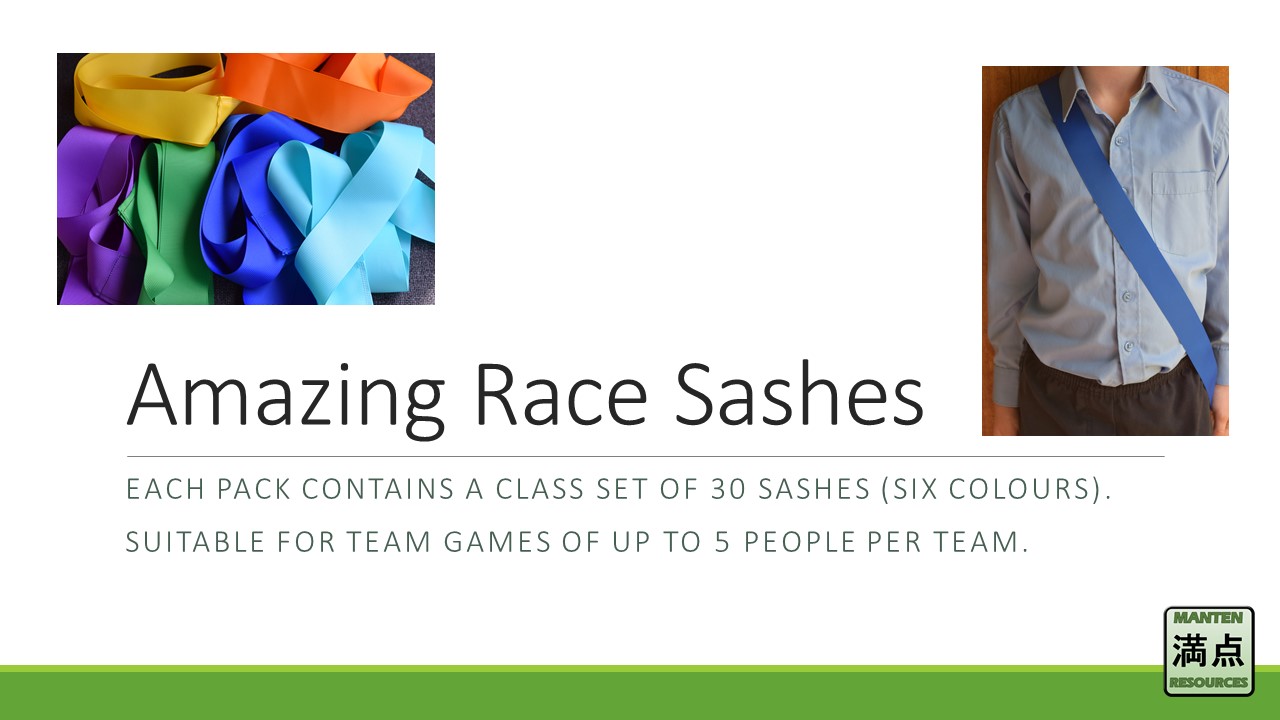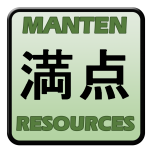What is the Amazing Race?
The Amazing Race is a classroom activity where students work in groups to complete a worksheet by moving around the classroom in pairs to different stations. Students are divided into table pods of 4 to 6 students (depending on class size), and only 2 students may leave their group at any time. Several stations with tasks are placed around the classroom. A pair of students from the group visits a station and brings back information to their group, enabling the group to work out the answer. The group works together to complete all the questions on the worksheet.
How does this activity benefit students?
This activity differentiates naturally and develops skills in collaboration and visible thinking. Visiting the stations in pairs allows the weaker student to observe the strategies used by the stronger student to solve the problem. The stronger student may in term develop their ability to convey their thinking in more coherent ways so that others are able to follow their reasoning. Students benefit from discovering that a lack of attention to detail costs their team points, and as such develop a new appreciation for editing their own work. All students benefit from seeing what they can achieve without teacher involvement, and will enjoy being able to move around the classroom. (Sitting down for long periods is disengaging for anyone!)
How does it benefit the teacher?
This activity benefits the teacher in two main areas. The first is in classroom control: when a teacher stops trying to control the class, but rather gives students something they can do without teacher involvement (but not too easily), the class becomes more engaged. If they are off task, they cannot win the race, and students are curious to discover what is on the station cards. A second benefit is that it is a programming saviour. It meets a range of cross-curriculum content and skills requirements in just one activity: numeracy, literacy, metalanguage, cultural knowledge, intercultural competency, listening, speaking, reading, and writing skills. Each race has been mapped to the Australian curriculum and this resource is available as a PDF.
Why is it recommended that this activity be conducted in an immersion environment?
The helicopter parenting style of our contemporary world means that many students have an aversion to failure and a low tolerance for stepping out of their comfort zone. They have a tendency to ask for help as soon as an issue arises, rather than experimenting with possible solutions themselves. When the setting is moved to an immersion environment where help is only given via the target language and gestures, it becomes less time consuming to work it out themselves. I guarantee most students will stop asking you “what does this mean?” when the answer is given in a lengthy wave of target language. The stronger students though will enjoy the challenge of trying to work out what is being said.
I like the idea, but it sounds like a lot of work to prepare.
All the preparation work has been done! There is an Amazing Race for each chapter of the textbooks JBlog 1, JBlog 2, and JBlog 3 (8 chapters per book), plus a half-yearly and yearly review version.
Each race includes a digital copy of all station cards, the student worksheet, teacher marking guidelines, and sound files. These can be downloaded and saved to any device in the school. We recommend you then print and laminate your station cards. You can purchase individual races for $18 each pack or the entire set of 10 races for $180.
To place an order or ask a question, please email us: jblog1help@gmail.com
Try this FREE version
This version of the Amazing Race is designed especially for when your sister school visits and you want to run an activity that forces both groups to work together using English and Japanese.
- Step 1: Download the Amazing Race resources by clicking the button above.
- Step 2: Unzip the
Amazing-Race.zipfile on your computer (usually you can do this by double-clicking it). Open the folder that is created. - Step 3: Open the station cards (
Amazing Race JV Station cards.pptx). Colour print them if you can and laminate them. - Step 4: Open the student worksheet (
Amazing Race Japanese visit student worksheet.pdf) and teacher marking guidelines (Amazing Race Japanese visit teacher marking guidelines.pdf). Print off one worksheet per student. - Step 5: Save the sound files for stations 2 & 6 (
Sound file station 2.mp3&Sound file station 6.mp3) to a laptop or computer that the students can access when playing the game. - Step 6: Buy a small toy kangaroo and put it in a cloth bag that you cannot see through.
- Step 7: On the day:
- Split your students up into roughly equal teams. Teams of 4-8 are best, but more can work. Students sit at group tables.
- If you have coloured sashes, these can help with crowd control and encourage team spirit, but you can work without these.
- Stick the station cards around the room eg pin or blue tac to walls, or place on tables around the room.
- Use a splitter (see station 6 card for what this looks like) to create a listening post. Pop in a few headsets so that 2-4 students can listen at once.
- Hand out the worksheets and go over the rules.

The Rules are:
- Do not take anything with you to a station eg pen, paper.
- Only 2 members of a team at a time may leave the group table.
- All students must contribute to the group by visiting at least 2 stations.
- Use your textbook and each other to solve the tasks.
- Return to a station as many times as you need to.
- Only one group at a station at any one time.
- This is an immersion lesson so remember your teacher can only speak to you in Japanese.
- You need to share your answers with your group. You are scored as a group so errors on one sheet will bring down your average. Edit each other’s work.
- Read the question carefully!
- Step 8: Stand back and watch them go. Once they start you don’t have to do much! They will come to you to do Station 4 and 8 so leave those cards on your desk.
